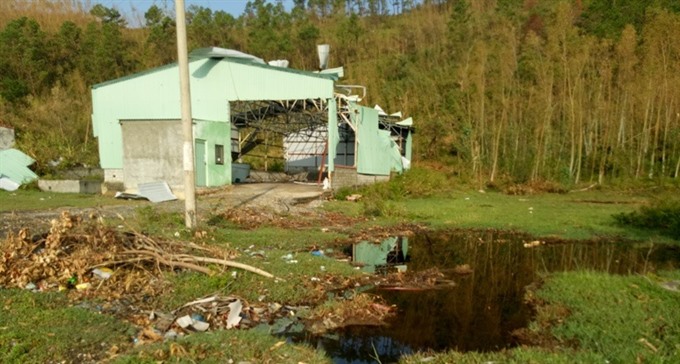 Society
Society

Central Quảng Bình Province officials today began clearing an abandoned warehouse storing toxic chemicals that was discovered after typhoon Doksuri swept through the locality in mid-September.
 |
| The damaged warehouse, after it was hit by typhoon Doksuri. — Photo baoxaydung.vn |
QUẢNG BÌNH — Central Quảng Bình Province officials today began clearing an abandoned warehouse storing toxic chemicals that was discovered after typhoon Doksuri swept through the locality in mid-September.
The province’s Department of Natural Resources and Environment on Tuesday decided to investigate the site, where local residents in the province’s Quảng Đông Commune reported of unbearable odour, discovered after the typhoon.
Following the trip, the department inspectors found 150 bags, with 25kg each of caustic soda flake, the industrial name for sodium hydroxide. Sodium hydroxide is a caustic chemical used in industrial processes of soap, paper production and cleaning substance manufacture. The chemical can cause scarring injuries on the skin and blindness, upon contact.
The department director, Trần Phong, said testing showed that soil and water around the warehouse was contaminated with chemicals.
Phong said the warehouse was owned by a business in the southern province of Đồng Nai. As the business was unsuccessful, the warehouse was left abandoned.
The department worked with the commune authorities to collect 12,000 litres of contaminated water and 15cu.m of soil for treatment. It also reported to the province authorities, the need to move the chemical bags to a safer place.
Earlier, locals smelt toxic odour and traced it to the warehouse, the roof of which was blown off and walls damaged after it was hit by typhoon Doksuri. At the site, chemical substances, scattered by the wind in an area of about 1,000sq.m dissolved in rainwater, were found to have caused the odour. — VNS









